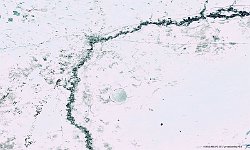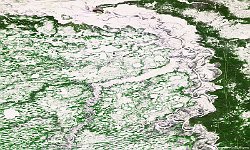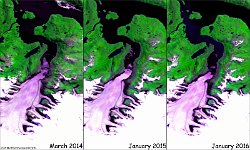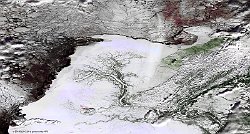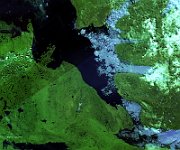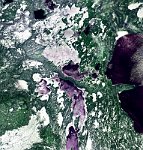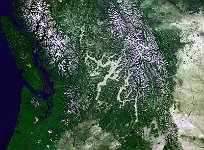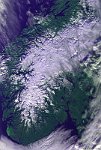10 / 21
Jorge Montt Glacier, Chile
The Jorge Montt Glacier is a tidewater glacier in southern Chili (total drainage area about 500 km²) and is part of the 13,000 km² Southern Patagonian Ice Field. The glacier is unfortunately subject to a fast retreat resulting from climate change. Scientific research has focused on documenting the retreat rate using ancient geographical reports, ground-based digital cameras, and satellite imagery. It was estimated from these data that the glacier has retreated by 20 km over the period 1898 – 2011, with the retreat rate rapidly increasing over the last decades (Rivera et al., 2012).
The glacier’s retreat is also well visible from the 100 m S1 images taken between 17 March 2014 and 9 January 2016, which shows the glacier frontal part receding by about 1.5 km, a continuation of the high retreat rate. Further, the image centres show Lago Jorge Montt and some snow-covered mountains of the Tortel region to the right.
Reference: Rivera, A., M. Koppes, C. Bravo, and J.C. Aravena, 2012: Little Ice Age advance and retreat of Glaciar Jorge Montt, Chilean Patagonia, Clim. Past., 8, 403 – 414, doi:10.5194/cp-8-403-2012.
Date: 2014-2016
Resolution: 100m


